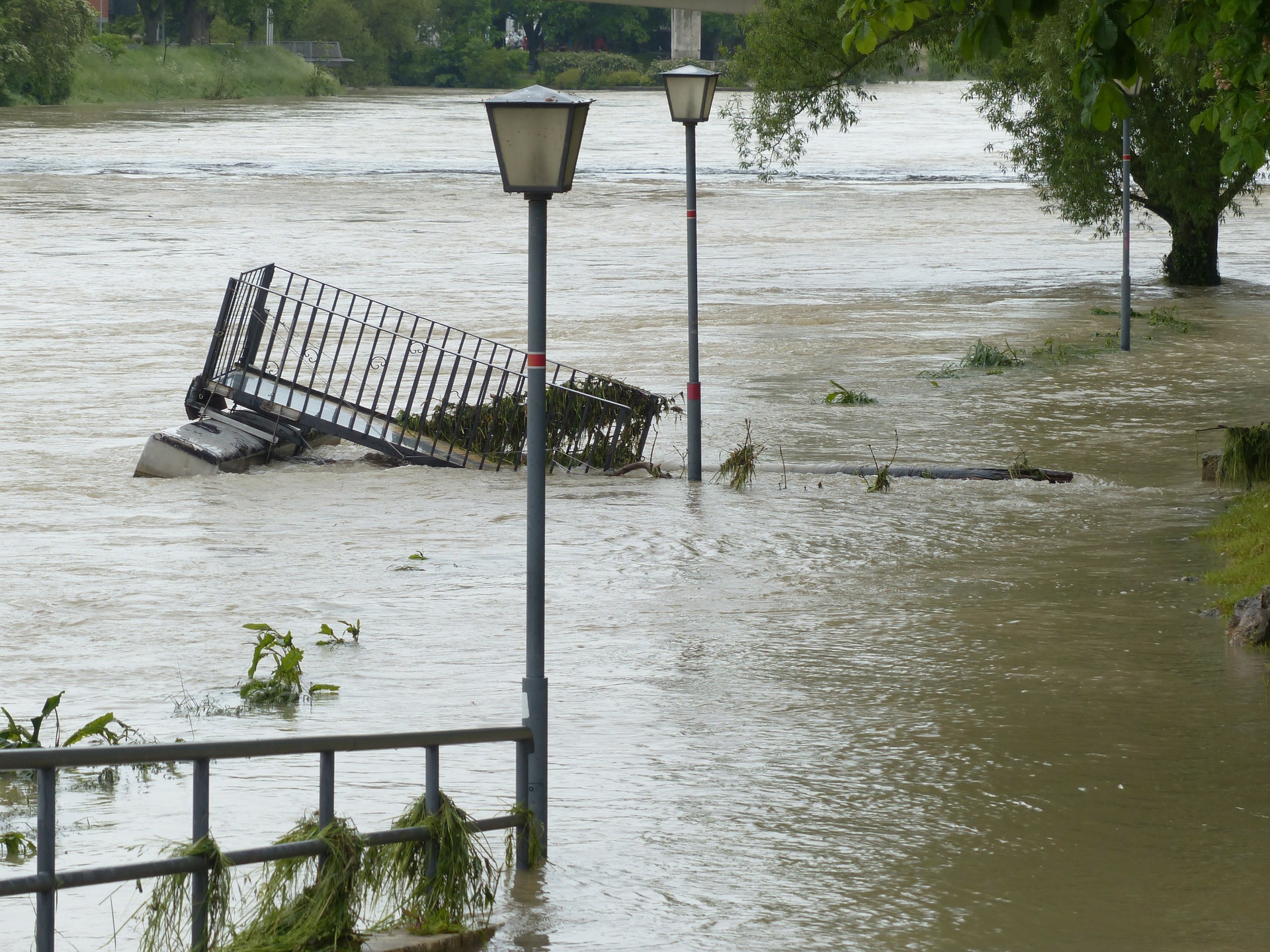Blog Archives
Post navigation

South Yorkshire Passenger Transport Executive
The integration of a Web GIS solution into a new customer information portal has enabled us to deliver better customer services more cost effectively.
Integrated into a new customer information portal, Esri’s ArcGIS technology is helping the South Yorkshire Passenger Transport Executive to transform the way that it communicates with customers. The strategic use of web-based GIS is not only delivering more convenient and personalised services for passengers, it is also contributing to savings of over £400,000 a year.
SYPTE now delivers more convenient and personalised information services for customers
The new customer portal provides a much more cost effective way of distributing travel information
ArcGIS helps SYPTE to work efficiently and resolve issues reported by customers more quickly
The Challenge
The South Yorkshire Passenger Transport Executive (SYPTE) is responsible for driving the development of the public transportation network in South Yorkshire and making information about bus, rail and tram services available to over 1.3 million people. The organisation wanted to introduce new information services for passengers, to encourage greater use of public transport. However, at the same time, it also needed to reduce its operating costs, urgently and sustainably.
To address these challenges, SYPTE decided to radically change the way in which it operated, by creating a single customer relationship management (CRM) platform that would centralise all of the organisation’s customer data, systems and processes. It planned to use this CRM not only to support all internal workflows, but also to transform the delivery of customer services via an integrated online customer portal
GIS is an essential part of MyTSY, it allows people to navigate easily to the areas they know, visualise routes, plan their journeys and have greater confidence in public transport
Saad Masood – senior GIS analyst, SYPTE
The Solution
SYPTE has been a customer of Esri UK for over 20 years and immediately recognised the importance of including geographic information system (GIS) technology at the heart of its customer portal. With support from Esri UK, the organisation used Esri’s ArcGIS Server and JavaScript API for ArcGIS solutions to create a series of GIS web services. It then integrated them tightly with the new central CRM, built on Microsoft Dynamics, to allow two way communications between the customer-facing map views, back-end databases and internal processes.
Named MyTSY (Travel South Yorkshire), the customer portal now allows passengers to access an interactive online map and enter their postcode to find their nearest public transport stops, the best routes and service times. They can also click on the map to initiate communications with SYPTE, such as to report damage at tram stops or request new bus stop locations. The mapping interface has been designed to work on mobile devices, giving passengers the ability to use the customer portal anywhere and at any time.
“GIS is an essential part of MyTSY,” says Saad Masood, Senior GIS Analyst at SYPTE. “It allows people to navigate easily to the areas they know, visualise routes, plan their journeys and have greater confidence in public transport.”
ArcGIS has helped us to change the way that people interact with us and enables us to deliver better customer services, more cost-effectively
Saad Masood – senior GIS analyst, SYPTE
The Benefits
Improved information services for customers
The integration of ArcGIS into the customer portal provides passengers with an easier and more convenient way to access travel information or contact SYPTE. The use of GIS is also helping SYPTE to deliver a new range of more personalised services for its customers. For example, commuters can view the interactive online maps to easily find and record their regular routes and bus stops. Then, when they leave work, they can simply use their smartphones to see exactly how many minutes away their next bus or tram is or see if there are any delays on the route. “People are often quite shocked that they can do this!” Masood admits. “It’s a great example of how GIS helps us to provide improved services for passengers and deliver a better customer experience.”
Reduced cost of customer contact
The MyTSY customer portal provides a much more cost-effective means of distributing travel information and handling customer enquiries than SYPTE’s network of travel information ‘shops’ in towns and cities around the area. “ArcGIS has helped us to change the way that people interact with us and enables us to deliver better customer services, more cost-effectively,” Masood says. “Reductions to SYPTE’s budget necessitated the closure of our physical shops and the organisation had to think about how to deliver information services effectively and sustainably. MyTSY has allowed cost savings of £400,000 in the first year. We expect the annual savings to be even higher in future years.”
Quicker resolution of issues
The online mapping capability plays a key role in helping SYPTE to resolve customer issues more quickly. For example, members of the public can go online, search for a specific bus stop and click on the map to report vandalism or damage to the shelter. This report is then automatically submitted to the relevant team, along with the correct location reference and the specification of the shelter, so that repairs can be initiated more promptly. When other passengers go online, they can see that the damage has already been reported and add comments to the existing record, but they cannot create an entirely new report for the same incident. This improves efficiency, as employees are no longer responding multiple times to the same issues.
Increased passenger numbers
Over time, SYPTE aims to improve customer satisfaction and increase the patronage of public transport. “By utilising Esri’s ArcGIS technology we are making it easier for passengers to plan their journey and make informed choices about available travel options,” Masood says. “Our aim is to encourage a modal shift to public transport services to reduce congestion and improve air quality.”

WSP Global
Providing 2,800 employee’s access to the geographic information they need helps save money and deliver a higher quality of service to our customers.
Engineering company WSP Global has used Esri’s ArcGIS platform to make spatial data and GIS capabilities accessible to 2,800 employees in its UK business. This enterprise-wide solution, named iGIS, helps the company to work more efficiently, save money and deliver a higher quality of service for its customers.
The Customer
WSP Group plc is a global management and engineering consultancy. Whether designing, building or maintaining roads, bridges or civic amenities, knowledge of the built and natural environment is essential to their business and that of their clients.
Consultants can arrive on site better informed and produce high quality presentation materials, helping to improve customer service
The company saves money by eliminating unnecessary duplication and data management costs
iGIS allows employees to work more productively, so tasks that used to take hours can now be completed in a fraction of this time
The Challenge
When planning new road links, staff need to know the location of existing transport routes and centres of population; when designing new amenities, they need to know what environmental constraints might exist. The challenge was to make this information readily available to support staff in their day-to-day role.
Previously, WSP had a single data repository (including Ordnance Survey, NAVTEQ and demographic data), but used two different Esri tools for working with it: ArcIMS for around 100 non-specialist users, and ArcGIS Desktop to provide advanced functionality to around 300 specialists. WSP wanted to make data available to all 2,800 employees, irrespective of location and level of GIS expertise. Consequently, any new system had be intuitive and easy-to-use.
We wanted to give our employees easier access to maps and enable them to obtain the geographic information they need without having to ask a GIS specialist
David Edem – UK GIS Manager at WSP
The Solution
Esri’s ArcGIS Server was identified as the best solution, partly because the Flex API (Application Programming Interface) in v9.3 makes it easy to create customised mapping applications, combining web services from ArcGIS Server with other web content, for delivery over an intranet or the web.
In addition, WSP chose Google Maps API Premier to provide access to background mapping and Google AJAX Search API for location finding.
Within four months, WSP developed a corporate mashup called iGIS to deliver GIS services to its UK employees. It integrates Google base maps and location services with the WSP’s geographic data assets and the powerful geo-processing capabilities of ArcGIS Server, which makes many terabytes of data instantly accessible across the entire UK operation.
The result is a user-friendly mapping application that allows users to perform such tasks as query population statistics by area, undertake proximity searches, sketch site boundaries and print maps on demand.
iGIS is rapidly becoming an essential business tool that is used regularly by a wide range of employees
David Edem – UK GIS Manager at WSP
The Benefits
Adoption was rapid (760 staff in the first fortnight and more than half the 2,800 UK staff within months) and the benefits too.
Data and functionality previously available to a few specialists is now available to all, taking GIS to new areas of the business. The intuitive iGIS interface, coupled with standard templates for figures and plans, has enabled GIS novices to produce high quality work for clients, including simple site location plans, analysing the demographics of an area, or undertaking complex spatial searches.
What previously took hours to pull together is now available in a fraction of the time, which is important in a business where many projects are charged on an hourly basis. iGIS allows WSP consultants to arrive on site with better knowledge of likely ground conditions and to offer a quicker, lower cost and higher quality service to clients.
ArcGIS Server has revolutionised data management: by having a central online data catalogue, WPS has saved money by eliminating unnecessary duplication and monitoring group spend more effectively to negotiate better rates.
Directors at WSP have been very impressed: “This is an exciting development of our GIS capability, which will materially improve the speed and efficiency of the delivery of a wide range of our project technical activities, calculations and presentation material,” says Mike Sheehan, Director, WSP Group. “iGIS helps to keep WSP competitive and stand out in the marketplace.”
Driven by positive feedback from staff and high demand, WSP plans to expand iGIS in the UK by adding further datasets and functionality and to roll it out globally across the entire group.
Recent improvements include adding new environmental and cultural heritage datasets and there are plans to add a geological map library catalogue showing where paper-based mapping has been purchased and where it is held.
In addition, WSP plans to use ArcGIS Server to develop value-added services for clients, who will be able to access their own data, analyse the results, drill down into layers of information and print their own maps, all via a secure login.

Westminster City Council
ArcGIS Collector App has contributed to cost efficiency savings. We surveyed 17% more sites, with a 20% smaller team, in nearly half the time.
Despite having fewer surveyors and more sites to inspect, Westminster City Council completed its 2015 planning survey nearly twice as quickly as in previous years and increased employee productivity by 20%. It made this remarkable achievement by using Esri’s ArcGIS Collector App to develop a new mobile data collection solution.
ArcGIS Collector App allowed the council to survey 17% more sites with a 20% smaller team
The council’s annual survey was completed 1.5 months more quickly than before
Use of the mobile data collection app has led to greater data accuracy and accountability
The Challenge
Westminster City Council has the busiest planning authority in the whole of the UK. Every year, it receives over 12,000 planning applications and needs to carefully manage the balance between residential, commercial and retail property to help maintain central London as a sustainable and successful city.
The council’s Evaluation and Performance team is required to survey the progress of planning permissions annually, in order to produce monitoring reports on changing land use patterns. This survey typically used to involve printing maps and forms and completing them by hand, on building sites, in all weathers. Inevitably, unnecessary inaccuracies and time delays occurred in transposing the hand-written notes back into the council’s IT systems.
When the department was reorganised, the team realised that a new survey approach was needed urgently. “The number of people in our team had reduced from five to four,” says Chris Lawrence, a spatial analyst at Westminster City Council. “However, at the same time, the number of planning applications that we needed to assess had increased by nearly 17% to 1,760.”
ArcGIS Collector App enabled us to survey 17 % more sites, with a 20 % smaller team, in nearly half the time. It has definitely contributed to cost efficiency savings for the council
Chris Lawrence – spatial analyst, Westminster City Council
The Solution
Westminster City Council has been using geographic information system (GIS) solutions from Esri UK for many years. Using the council’s existing licence for Esri’s ArcGIS platform, the team was able to take advantage of Esri’s ArcGIS Online and ArcGIS Collector App to create a new mobile data collection solution. It then borrowed tablet computers from other council departments, enabling it to get up and running for almost no capital cost.
The new mobile surveying solution was introduced in the summer of 2015, allowing surveyors to plan their routes around London and complete their surveys electronically for the first time. At each site visited, surveyors selected from a range of symbols, such as green flags, to indicate if projects were progressing as anticipated. When the tablets were connected to Wi-Fi, the survey data was transferred almost instantaneously to ArcGIS Online, allowing colleagues in the office to monitor the surveyors’ progress.
This mobile app is an excellent example of how ArcGIS allows corporate GIS teams to provide business users with the tools to do innovative, time- and cost-saving work
Peter Kohler – GIS lead at Westminster City Council
The Benefits
This resourceful use of mobile GIS within the council has led to significant benefits including:
Surveyor productivity improved by 20%
The tablet-based GIS is far easier to use than paper copies of maps and forms. Consequently, the council’s surveyors were able to gather data more quickly and plan optimum routes around the city to avoid duplicated journeys and wasted time. “ArcGIS made a huge difference to our productivity,” Lawrence says. “Whereas we used to be able to survey an average of 50 sites per day, per person, we can now survey 60 sites per day, per person.”
Project duration reduced by 1.5 months
Using its new mobile GIS solution, Westminster City Council was able to undertake the 2015 survey with four surveyors in just two months; previously, it had taken five people three and a half months to complete. This achievement is all the more noteworthy considering that there were around 250 more sites to survey this year than in previous years, as Lawrence points out. “ArcGIS Collector App enabled us to survey 17% more sites, with a 20% smaller team, in nearly half the time,” he says. “It has definitely contributed to cost efficiency savings for the council.”
Greater accuracy and accountability
As the surveyors’ observations are recorded digitally, there is less likelihood of inaccuracies occurring when notes are transposed from paper forms to the council’s database. Consequently, the quality of the council’s statutory reports is improved. In addition, the mobile GIS makes it easy for the team to look back, see who visited which site and when, answer any queries and validate the survey information.
Faster manipulation of data for reports
The versatility of ArcGIS Online enables the council to easily export its survey data into Excel spreadsheets and also extract shape files showing map images which can be easily embedded into its statutory reports. “I don’t have to manually compile spreadsheets anymore,” says Lawrence with enthusiasm. “The data component of our annual report took just a week to complete this year, rather than a month in previous years.” The Evaluation and Performance team is now looking at Esri’s story map templates and investigating ways to use them to further improve the quality its statutory reporting in the future.
Peter Kohler, GIS lead at Westminster City Council commented, “This mobile app is an excellent example of how ArcGIS allows corporate GIS teams to provide business users with the tools to do innovative, time- and cost-saving work. Projects like this help to deliver a high return on the council’s investment in GIS.”

Worcestershire County Council
When extreme weather conditions occur in Worcestershire, we can react more quickly to emerging crises to help prevent road accidents and save lives.
When extreme weather conditions occur in Worcestershire, the council’s highways maintenance team is prepared to help prevent road accidents and save lives. Using a new emergency GIS service, developed using Esri’s ArcGIS technology, it can react more quickly to emerging crises, while also helping to reduce its annual operational maintenance costs.
ArcGIS improves public safety by helping the council to quickly mobilise to the locations of greatest need
The web-based GIS is expected to deliver considerable cost savings from improved logistical and operational efficiencies
In emergency situations, the solution will improve collaboration between multiple agencies and facilitate coordinated responses
The Challenge
The primary role of the highways maintenance department at Worcestershire County Council is to improve public safety on the roads by maintaining the public highways. During periods of exceptional flooding, violent storms and heavy snowfall, its job becomes not only more difficult, but also more critical.
In one particularly bad flooding incident, the army was called upon to work alongside the council and other emergency services to help deliver sandbags and clear debris from roads. However, not everyone was familiar with the county and coordinating activities was a huge challenge. “It became obvious that we needed a single, web-based system for sharing highways information with multiple different agencies and making up-to-the minute information available to the general public in emergency situations,” recalls Elwyn Williams, Highway Maintenance Officer at Worcestershire County Council.
By enabling us to put out emergency signage or close a road more promptly, our ArcGIS app helps us to save lives
Elwyn Williams - Highway Maintenance Officer, Worcestershire County Council
The Solution
The council had been using Esri’s ArcGIS platform as its enterprise geographic information system (GIS) for over 15 years and already had all of the software and skills it needed to build a solution for the highways maintenance department. Initially the prototype application was introduced within weeks; more data and solution enhancements were then added over subsequent months. “We deliberately adopted an agile development approach, so we could quickly start using the new GIS,” says Mark Smith, GIS Programme Coordinator at Worcestershire County Council. “ArcGIS gave us an ideal platform for rapid application development and enabled us to create a bespoke solution – for no additional cost other than our time.”
Named the Highways Maintenance Emergency GIS (HMEGIS), the solution brings together over 30 layers of data and, for the first time, makes them visible on interactive maps all in one place. Internal data such as emergency sign deployments, fallen trees, closed bridges, grit bin locations and high risk campsites is consolidated with data streamed from external sources, including live feeds from riverside webcams, maintenance vehicle locations, actual gritting routes, customised river warning levels and weather forecasts.
HMEGIS has a number of innovative features including an alert panel that scrolls across the top of the screen, so that all operatives can instantly see and react to the latest emergency situation. The solution also has a ‘rewind and replay’ tool that allows managers to look back at past emergencies and see, at a glance, which assets and resources were deployed where, and when.
ArcGIS gave us an ideal platform for rapid application development and enabled us to create a bespoke solution – for no additional cost other than our time
Mark Smith – GIS Programme Coordinator, Worcestershire County Council
The Benefits
Improved public and personnel safety
Worcestershire County Council now has a single system for recording incidents such as fallen trees, enabling it to co-ordinate a faster response. “We can send the most appropriate people, with the right equipment, to the locations of greatest need, so that situations can be dealt with properly and quickly,” says Elwyn. “By enabling us to put out emergency signage or close a road more promptly, our ArcGIS app helps us to save lives.”
Significant resource and cost savings
While each emergency situation is totally different, Worcestershire County Council will inevitably save money by using HMEGIS to: deploy the nearest vehicles to incidents; locate assets quickly; and avoid duplicating the work of other agencies. “At times when significant emergencies like floods or heavy snowfall occur, we estimate that our GIS app will help us to make considerable cost savings through improved logistical and operational efficiencies,” says Elwyn, while emphasising that, “The real benefits in terms of accidents avoided and lives saved cannot be financially quantified.”
Better multi-agency coordination
The ArcGIS app is now being introduced to partner organisations, starting with the Highways Agency. Eventually access will be extended to multiple third parties including district councils, the Environment Agency and the fire, police and ambulance services. “HMEGIS will make the same ‘here and now’ picture available to everyone,” predicts Elwyn. “We will be able to talk with confidence about the same location, avoid duplication and ensure we are all optimally deployed to minimise public risk in emergency scenarios.”
Continuous improvement of emergency plans
HMEGIS was originally designed as an operational tool, rather than a management tool. However it is proving invaluable to the council’s highways maintenance department and emergency planning team, who use it to inform the development of new emergency response strategies. Using the slider tool, employees can refer back to and learn from previous situations and use this knowledge to improve the council’s effectiveness in future incidents.
More efficient customer service
When members of the public phone the council, call centre agents can use HMEGIS to provide immediate feedback and up-to-the-minute information about road closures. Similarly, if the council receives a freedom of information request (such as how often was a specific bridge closed), employees can use the GIS slider tool to easily look back in time and respond promptly. In the future, the council plans to further improve its customer service by developing a public version of HMEGIS that will enable everyone to see the latest information about road closures online.

Yarlington Housing Group
Sourcing OS data from Esri UK cost us the same as other vendors were quoting purely for the data, so we achieved great value for money
After selecting Esri’s ArcGIS for its first ever corporate GIS solution, Yarlington Housing Group (YHG) turned to Esri UK for help and advice in sourcing and loading data from Ordnance Survey and other third parties. The support and expertise provided by Esri UK’s Data Services group equipped the organisation with precisely the data it needed saving weeks of effort.
The Customer
Yarlington Housing Group (YHG) provides affordable housing across the South West of England, owning and managing over 9,000 properties in Somerset, Devon and Dorset. Working closely with local authorities, the group provides homes to rent and also offers Government-funded schemes to give people the chance to buy their own home. Based in Yeovil, YHG employs over 300 staff and was established in 1999 through a Large Scale Voluntary Transfer.
Esri UK’s Data Services professionals saved YHG around two weeks of time, by supplying data in precisely the right format for its GIS
The data experts were able to advise YHG on the most appropriate data types to acquire to deliver added benefits for the business
YHG asserts that Esri UK’s data services delivered better value for money than similar services offered by other vendors
The Challenge
YHG wanted to create a new corporate geographic information system (GIS), from which the entire housing association would benefit. By combining data from Housing Management, Asset Management, Workflow Management Tool, Repairs and Services, the company-wide GIS would give a complete view of the business and deliver valuable new insights in order to make informed strategic decisions and for users to quickly access and view information collated from a range of disparate systems in one central location.
With no previous GIS at YHG, the group had already decided to use Esri UK’s ArcGIS as its new GIS platform, but needed the most suitable Ordnance Survey (OS) data to underpin it.
“Embarking on a GIS project with such far-reaching implications meant expectations were high, so we needed the best approach to source our OS data,” explained Chris Reed, GIS Administrator, Yarlington Housing Group. “Customer service, housing specific knowledge, data quality, efficiency and costs were the main drivers behind our search for a supplier.”
After examining the market, YHG concluded that Esri UK could meet its OS data needs and offer other invaluable benefits.
The Esri approach presented a seamless OS dataset ready for use, resulting in an efficient integration into the GIS. We were up and running in a fraction of the time compared to buying data on its own
Chris Reed – GIS Administrator, Yarlington Housing Group
The Solution
For our initial phase of the implementation, YHG selected a combination of OS OpenData services, OS mastermap and OS 1:25 000 Scale Raster for its base map data but recently updated the raster data to VectorMap Local following Esri UK’s recommendation. Delivered in file-geodatabase format and already set-up to the group’s specific scale, style and projection criteria, the new data was supplied optimised and cached for their GIS.
“While VectorMap Local was more expensive, we felt it presented better value for money for the organisation. It provided a greater level of flexibility by having a number of different map styles and had all the benefits of vector data, such as the ability to carry out analysis, feature integration and calculations. We were also able to take advantage of a three year contract providing a year’s cost saving compared to an annual agreement,” explained Chris Reed. “Esri provided the OS data in the correct format for our GIS and its bespoke service meant data arrived just for the area we needed, with the correct cartographic layer .mxd files, styled to our requirements.”
At no additional cost, Esri UK also provided a cache of the base-map data, geo-coded property lists and online data services such as OS OpenData, already pre-cached and in the correct format.
“Esri UK’s data consultants are experts in the housing sector and could therefore recommend and supply the most appropriate OS data,” said Chris Reed. “But it was the extra services they offered included in the price that made their solution most attractive. The team is very accessible and quick to help with any queries and we’ve built a strong working relationship.”
Another factor in YHG’s decision was that it already had a contract with Esri UK for the GIS software. Being able to deal with the same supplier for its OS data made the whole process easy and straightforward.
Esri UK’s data consultants are experts in the housing sector and could therefore recommend and supply the most appropriate OS data
Chris Reed – GIS Administrator, Yarlington Housing Group
The Benefits
Selecting Esri UK’s OS data solution has saved the Yarlington Housing Group’s GIS team a significant amount of time and effort.
No extra work was needed to convert or load the data, match tiles or create the desired symbology, as Chris Reed explained: “The Esri approach presented a seamless OS dataset ready for use, resulting in an efficient integration into the GIS. We were up and running in a fraction of the time compared to buying the data on its own.”
Another major time saving has been realised from the map cache. Previously, when YHG had first received its OS Raster data and master maps, creating a cache had taken them several days due to the caching process and processing issues. Now the team simply load the cache into their GIS and it becomes live the same day, with the GIS performance levels that users demand. The cache will also play a vital part in future plans for new web and mobile-based GIS services.
“Overall, the new approach from Esri UK has saved the organisation approximately 2 weeks of development work,” stated Chris Reed. “We no longer have to convert data, geocode properties, create symbology and build a cache, allowing us to focus on developing functionality, data and services that our users require.”
All of Yarlington Housing Group’s OS data needs were met by Esri UK along with the additional value-add offered by their data consultancy services. Data updates are now also provided on a six-monthly basis via ftp download.
“Esri UK has an in-depth understanding of the housing market and sourcing OS data from them has cut significant costs from the whole GIS process,” concluded Chris Reed. “The total solution has cost us the same as other vendors were quoting purely for the data, so we achieved great value for money.”

Wales & West Utilities: Design & Build
In an increasingly competitive market, an integrated approach facilitated by GIS has enabled more accurate quotes and improved customer service.
The gas distribution business Wales & West Utilities used Esri’s ArcGIS to radically transform its paper-based process for designing and building new network assets for customers. The use of GIS has significantly improved the efficiency of its operations, while also giving it more accurate and up-to-date asset information.
The Customer
Formerly part of National Grid, Wales & West Utilities (WWU) is a regulated gas distribution business with around 34,000 km of gas distribution pipelines, covering a sixth of the UK, and serving 7.4 million people. Every year, WWU repairs and replaces over 400 kilometres of gas pipeline to ensure its safety and reliability. In addition, they actively compete with other infrastructure providers for new connection contracts.
ArcGIS cuts out months of delay in some processes, creating substantial improvements in operational efficiency
Plans and network changes are entered directly into ArcGIS, making more accurate and up-to-date asset information accessible to the entire business
Digital network designs are attached to customer records, helping the business respond more effectively to customer enquiries
The Challenge
Maintenance and new connections use similar design and build processes, so WWU wanted to improve competitiveness and efficiency by streamlining these processes, building on a strong foundation of integrated systems.
Phil Pike, Head of IT explains: “One of our main goals was to reengineer the business processes that we had inherited from National Grid and create more automated, end-to -end processes. We saw GIS as an important tool in helping us to achieve this goal.”
Paper-based processes were slow and prone to dual entry, mismatched data, poor data quality and delays. Designers drew new networks and any changes in the field – such as rerouting around trees – were marked by hand and sent to head office to be digitised and loaded onto a GIS solution. “As a result, our asset information was always six months out of date. This was something that we were committed to changing,” observes Pike.
An integrated approach, facilitated by GIS, had the potential to improve customer service and the accuracy of quotes, in an increasingly competitive market.
ArcGIS has enabled us to improve both the quality of our information and our operational efficiency
Phil Pike – Head of IT
The Solution
WWU has achieved significant improvements in operational efficiency with its integrated approach to Design and Build, created in partnership with Esri UK industry specialists, using the ArcGIS Server.
Designers now enter their plans directly into the central GIS, giving all staff a clear, accurate and up-to-date view of the current and future network. “Using the ArcGIS design layer is like putting a piece of acetate over a hard copy map and marking the new pipe route on that”, explains Nick Hancock, Senior Business Analyst. “The designs created in ArcGIS become the graphical representation of the work that we are going to undertake. When the repair work or new installation is completed, we simply select ‘adopt new’ in the system and the replacement designs become actual plans. All our central records are immediately updated.”
To quote for new connections, staff scan housing development drawings and geo-reference new properties. Designers can easily identify the nearest mains and digitally design the new pipe infrastructure, which can be automatically exported into network sizing software to accurately define the dimensions and attributes of the new scheme.
Integrating ArcGIS with the SAP back office system creates further efficiencies: when plans are approved, ArcGIS automatically triggers the creation of assets and work orders in SAP. Time-saving and intuitive features, such as favourites lists with pre-set attributes for common tasks, ensure the system is easy for users.
We can effectively provide standard quotes for non-standard installations
Nick Hancock – Senior Business Analyst
The Benefits
The greatest benefit of the integrated approach is the undeniable improvement in operational efficiency.
“We used to have to go into the back office system to create each separate work order,” recalls Hancock. “The interfaces with SAP save an enormous amount of time and effort. As soon as we hit the ‘plan approved’ button, all the necessary work orders and central records required by our back office systems are automatically created in SAP.”
Because plans are entered directly into the central GIS system, there is no need for plans to be digitised after the work is carried out: maps are more accurate and up-to-date. “The new process is much closer to real time and cuts out months of delay”, says Pike.
New connection quotes are delivered quickly, consistently and professionally. “We can effectively provide standard quotes for non-standard installations,” says Hancock.
The company’s customers also benefit from the new Design and Build process. WWU can attach electronic copies of plans to records in its customer relationship management (CRM) system. “Everyone has visibility of the design and this improves our ability to provide good customer service,” says Hancock. “As soon as a project is approved, we can very quickly activate the job in the system and offer a customer appointment at an early date.”
WWU plans to continue to extend this integrated approach to include mobile ArcGIS for field engineers, so that the Design and Build process becomes truly end-to-end.

Wales & West Utilities
A single, accurate view of assets along 34,000 km of gas pipelines has delivered operational efficiencies across multiple areas of our business.
As part of a wide-ranging programme of IT transformation, Wales & West Utilities installed Esri’s ArcGIS platform, gaining a single, accurate view of assets along 34,000 km of gas pipelines. Integrated with SAP applications, ArcGIS is contributing to multi-million pound efficiency savings.
The Customer
Wales & West Utilities is a regulated gas distribution business with around 34,000 km of gas distribution pipelines located in Wales and the South West of England. Covering a sixth of the UK, Wales & West Utilities serves an area with a population of 7.4 million.
ArcGIS has facilitated the creation of new streamlined business processes in areas such as ‘design and build’
The availability of more accurate, up-to-date information supports high level decision making and enhances reporting
The organisation can now more easily share information with third parties, such as other utility companies to improve public safety
The Challenge
Wales & West Utilities was founded in 2005, when a consortium acquired the gas network for Wales and the West Country from National Grid Transco. Initially, the newly autonomous utility rented IT systems from its former owner, but it was keen to be independent as soon as possible.
It set about a huge programme of IT investment. “GIS was seen as a mission critical system that we needed to put in from the outset, to replace functionality provided by National Grid,” explains Phil Pike, Director of IT & Procurement.
However, the company didn’t just want to replicate the National Grid systems, it wanted to streamline processes enabling it to operate more efficiently. “From an IT systems perspective, we were starting with a blank piece of paper,” says Pike. “This gave us an opportunity to start from scratch with streamlined and centralised systems that would minimise our total cost of IT ownership.”
The company recognised that it would be more cost effective to have one GIS for the entire organisation and searched for a solution to meet the needs of its entire business. “Virtually everything that we do requires an understanding of where our pipes and other assets are located,” explains Pike. “We felt that it was important for us to be able to make clear, accurate and up-to-date information available throughout our organisation in a graphical and user-friendly format.”
ArcGIS is an integral part of our business
Phil Pike – Director of IT & Procurement
The Solution
Wales & West Utilities selected Esri’s ArcGIS Server solution. “We wanted an off-the-shelf product that was tried and tested in the gas sector,” says Pike. “We had aggressive timescales for implementing the new GIS solution, so strong gas industry experience and existing gas-specific functionality were extremely important for us.”
Wales & West Utilities gained a single joined-up view of its business assets and operations; easily accessible to desktop, intranet and field based users. It is now possible for accurate asset information to be shared easily between teams. For example, a designer in the new connections business can see which pipes the maintenance team are planning to repair or replace. This helps to cost and plan extensions to the gas network. Customer service teams can view accurate maps of pipelines to help them respond to customer enquiries. The company can react quickly to emergency calls and easily identify precise locations of leaks and outages improving public safety
ArcGIS Server is also delivering innovative new functionality to support network design. Designers can create plans for new connections and replacement pipelines directly within the central GIS. “If we didn’t have this integrated design and build capability, much of this process would be done manually on paper,” explains Nick Hancock, Senior Business Analyst. “The plans would then have to be digitised after the new pipes had been laid, which takes much longer.”
ArcGIS Server has been incorporated into the company’s wider IT environment. Wales & West Utilities uses SAP enterprise resource planning (ERP) software for its back office systems and has integrated a number of key processes across the two solutions. “ArcGIS and SAP are tightly coupled,” says Pike. “The flow of information between the two systems is very effective.”
We now have a single, common view of our asset information, in a graphical format, and this creates operational efficiencies across multiple different areas of our business
Phil Pike – Director of IT & Procurement
The Benefits
The availability of centralised, up-to-date asset information has led to the creation of new streamlined business processes, and the new GIS-enabled design and build capabilities have contributed to tangible time and cost savings.
“We now have a single, common view of our asset information, in a graphical format, and this creates operational efficiencies across multiple different areas of our business,” says Pike. “The deployment of a centralised GIS solution formed a key part of our business improvement programme. This IT transformation programme was seen as a key business enabler and has contributed to overall efficiency savings worth several million pounds.”
In the company’s management and administrative functions, improved availability of up-to-date data enhances reporting and supports high level decision making. ArcGIS is used to prepare and present information for regulatory compliance and health and safety audits.
ArcGIS has made it easier for the organisation to share information with third parties, such as other utility companies. “If a local electricity or water provider is undertaking essential repairs on a certain street, it will need to know exactly where our pipes are to ensure the safety of its engineers and the public,” explains Hancock. “Because designs are created in ArcGIS and there is no time delay between pipes being laid and maps being digitised, we can provide maps to third parties with more confidence in their accuracy.”

University of Northampton
ArcGIS has given us greater insight, helping us to further tailor our marketing and attract higher numbers of applicants to our university
Given the increasing competitiveness between universities to attract new undergraduates, the University of Northampton has started to use Esri’s ArcGIS platform to help it improve its marketing. This innovative use of GIS helps the university to promote the value of its courses and increase applications from prospective new students.
The Customer
The University of Northampton is situated in the heart of England and offers a range of courses at undergraduate and postgraduate level.
ArcGIS reveals where existing students originate from, helping the university to understand where best to target its future marketing activities
GIS helps to show prospective new students where they might find employment and what their prospects might be following graduation
The university uses ArcGIS to identify local areas of deprivation and encourage disadvantaged children to go to university
The Challenge
Universities in England and Wales are facing up to one of the biggest changes in higher education in decades. Students now have to pay tuition fees of up to £9,000 per year, and this huge financial consideration is deterring many young people from continuing their education. Indeed, in the autumn of 2012, there was a 12% decline in student enrolments across the UK. As a result, many universities failed to fill their courses and suffered a reduction in funding.
The University of Northampton was quick to realise that the introduction of tuition fees would necessitate a dramatic shift in the way that it promoted itself to prospective new students.
Firstly, the university recognised that it would need to further target its marketing activities more precisely towards those students most likely to choose Northampton to help it increase applications. Analysis of postcodes from applicants had been undertaken, however, analysis of enrolled students had not been undertaken. Furthermore, there had not been any opportunities to monitor changes to the location of enrolled students over time.
Secondly, the university was being asked to contribute towards economic reports relating to graduate employment of students from Northamptonshire. It was recognised that this report would also demonstrate the quality of the University’s education to prospective students and reassure them that they would be able to work in graduate-level employment afterwards. The university is currently named England’s top university for employability.
Using GIS, we were able to allocate our ambassadors strategically to help raise the aspirations of pupils in the most deprived parts of the County
Emily Fletcher – Business Intelligence Officer, The University of Northampton
The Solution
Like many further and higher education institutions in the UK, the University of Northampton teaches geographic information system (GIS) skills to its students. Every year, as many as 80 undergraduates and 20 postgraduates are introduced to GIS as part of Environmental Science, Geography and Waste Management courses, and the university has a site-wide licence to use Esri’s ArcGIS software for this purpose.
Emily Fletcher, a Business Intelligence Officer within the Office of the Vice Chancellor, discovered that she could also employ ArcGIS for research and business intelligence purposes, at no additional cost. In the first instance, she used ArcGIS Desktop to create a map showing precisely where enrolled students come from. This project provided conclusive evidence that many of the university’s enrolled students come from Northamptonshire. However, it also revealed that pockets of students originate from locations further afield.
Every year the university undertakes a survey to ascertain the destination of leavers. Fletcher used this survey information to create a GIS application that displays students’ home towns, where they subsequently obtained jobs after graduation and whether those jobs are graduatelevel positions. These maps are used in a variety of ways to inform students about job prospects, as well as supply data to Northamptonshire County Council for use in economic reports.
Finally, Fletcher has also used ArcGIS Desktop to plot the locations of Northamptonshire’s primary schools against the National Index of Multiple Deprivation and highlight those schools in the poorest areas of the town and County. Students then visited these primary schools to talk to children about university life. “Using GIS, we were able to allocate our ambassadors strategically to help raise the aspirations of pupils in the most deprived parts of the County,” Fletcher says.
ArcGIS has given us greater insight, which will help us further tailor our marketing and attract higher numbers of applicants to our university
Emily Fletcher – Business Intelligence Officer, The University of Northampton
The Benefits
The use of ArcGIS has given the University of Northampton a deeper level of intelligence about its applicants and students. For example, it will be able to foster links with schools and colleges in areas where, historically, young people have tended to select Northampton. “ArcGIS has provided the University with an opportunity to pictorially capture where our students originate” says Fletcher. “It has given us greater insight, which will help us further tailor our marketing and attract higher numbers of applicants to our university.”
In addition, the University of Northampton has gained a great deal of value from being able to analyse the results of its annual leavers’ survey using GIS. While information about students’ destinations had always been available in the past, this information is now displayed clearly on interactive maps. Prospective students can therefore easily see where past students have moved to and whether they have obtained graduate-level employment. This helps them to understand the value that they will gain from an education at the University of Northampton.
Finally, the use of GIS is helping the University of Northampton to target its ambassadorial activities more precisely to those areas of greatest need or relevance. The UK Government seeks to raise the attainment of young people from deprived areas, and the university can now clearly demonstrate how it is supporting this national agenda.

Veolia Water
Being able to integrate with web services of all types is a key advantage because we can easily share information with partners, the public and regulators.
Replacing two legacy systems, Veolia Water deployed Esri’s ArcGIS to create a single, integrated GIS for over 600 employees. This enterprise-wide GIS strategy is increasing the efficiency of business processes and leading to long term cost savings, as well as improvements in customer service.
The Customer
Veolia Water UK relies on geographic information systems (GIS) to supply over 900 million litres of fresh drinking water to 3.5 million customers every day, using around 16,000 km of water mains.
ArcGIS gives all employees a single, accurate, up-to-date view of assets, leading to better decision making
Customer service is improved as the organisation can respond to leaks more quickly and work more efficiently
Veolia Water expects to secure ROI in enterprise-wide GIS in less than five years
The Challenge
Veolia had two main legacy GIS applications, which were no longer supported, making it difficult to adapt to changing business requirements.
Most significantly, the company had no single source of up-to-date spatial data, contributing to poor data quality, data duplication and other inefficiencies. “We had to reduce the risk of making operational decisions based on information that wasn’t absolutely correct”, says Steve Andersen, Works Systems Manager. “At the same time, we wanted to become more efficient in the way that we worked.”
By having consistent data and ArcGIS tools in place throughout our organisation, we will be able to improve many business processes
Steve Anderson – Works Systems Manager
The Solution
Working closely with Veolia’s own staff, Esri designed and implemented the new corporate GIS solution, including extensive data cleansing and knowledge transfer to key Veolia users.
The solution was delivered in three phases, over twelve months. The first and most significant phase was the single central spatial database, created using ArcGIS Server, running on an Oracle database, and accessed via a web browser.
In phase two, Veolia extended database access to over 600 users, with a bespoke web page for each distinct group of users. This reduced unnecessary complexity, making it easy for users to find the tools they needed. In addition, the existing field-based GIS was upgraded to use the new database.
Deploying Esri’s ArcGIS Desktop software to provide full-featured GIS to over 50 specialist users was the final phase.
As our business grows, we will be able to achieve more with the same number of people. In the future, I see huge gains in efficiency across the entire business
Steve Anderson – Works Systems Manager
The Benefits
For the first time, Veolia has a fully integrated and centralised GIS:
One version of the truth
“Our network is a living thing that can change in nature at a moment’s notice”, says Andersen, and now the current status of all network assets is visible to all users, at all times.
More efficient business processes
“By having consistent data and ArcGIS tools in place throughout our organisation, we will be able to improve many business processes”, says Andersen. New automated processes include updating water leakage schematics whenever the central database is updated.
Long term cost savings
Andersen believes that “Veolia Water UK anticipates getting return on its investment within five years and hopes to benefit financially far greater than this into the future.”
Improved customer service
Responses to issues such as leaks are quicker, and there are new browser-based tools. For example, the conveyancing department can supply solicitors and home movers with a map, clearly showing the water main nearest to a property.
Reduced risk
Veolia now has a fully supported solution that can link to external systems and expand to meet changing requirements. In addition, ArcGIS improves the accuracy of street works, thus minimising the risk of corrective measures and fines.
Better decision making
Employees now trust the data, without the overhead of weekly data refreshes, the risk of basing decisions on out-of-date information, or field staff wasting time returning to the depot between jobs. Furthermore, “it was very difficult for us to distinguish between what was in the ground and what was proposed”, admits Andersen, but, “we are now much more able to show proposed pipe lines for new housing developments on the system. This helps the management team to make good long term investment decisions.”
Improved information sharing
ArcGIS makes it easier for Veolia to share information with other water authorities, external partners, public bodies, regulators (OfWat and DWI) and government departments. Flexibility to integrate map feeds from the internet and feed out its own information is crucial. “Being able to integrate with web services of all types is a key advantage,” says Evan Quick, GIS Manager.

Worcestershire Community Safety Partnerships
ArcGIS makes it easy for us to collaborate with our partners to share data and create web maps. Understanding where to focus our resources is helping to reduce crime.
Established by Worcestershire County Council, the Worcestershire Community Safety Partnerships (CSPs) bring together representatives from local councils, the police, fire service, probation service, chamber of commerce and voluntary organisations. The groups use Esri’s ArcGIS platform to share information, gain new insight into crime and plan local crime reduction initiatives.
The Customer
Worcestershire County Council serves more than half a million people in approximately 240,000 households. It delivers a wide range of services, in conjunction with six district councils, and is one of the highest performing councils in the country.
ArcGIS draws together information from multiple organisations to highlight problem local areas and reveal concerning trends in crime and anti-social behaviour
Partners can easily interpret the data displayed in ArcGIS, which helps them to implement effective measures to protect local people and properties
The Bromsgrove CSP used ArcGIS to identify that criminal damage occurred in main streets, at specific times, and took subsequent steps to successfully address the problem
The Challenge
The Crime and Disorder act of 1998 requires councils to establish formal partnerships with other local agencies and organisations to implement local crime reduction initiatives. Worcestershire has four Community Safety Partnerships (CSPs), involving representatives from the police, fire service, probation service, chamber of commerce, district and county councils, and voluntary organisations, such as Neighbourhood Watch.
CSPs are required to produce Crime and Disorder Audits every two to three years. “We found it very challenging”, explains David Onions, Research Manager, Worcestershire County Council. “The newly formed CSPs didn’t have the complete range of analytical skills or the capacity to pull together reports of the depth and quality they may otherwise have desired.” Consequently, the CSP sought support from the Research & Intelligence (R&I) Unit at Worcestershire County Council to help produce audits more effectively, and with more detailed analysis and visual representations.
The newly formed CSPs didn’t have the complete range of analytical skills or the capacity to pull together reports of the depth and quality they may otherwise have desired
David Onions – Research Manager, Worcestershire County Council
The Solution
Worcestershire had recently decided to migrate to Esri’s ArcGIS across the entire council, so it used it to support CSPs too. Onions recalls: “It made it possible for us to make data more accessible to our partners. The selection of ArcGIS also gave us a range of new tools – such as the ability to create web-based maps – that we foresaw would be very advantageous for our work with external organisations.”
Geographical Information Systems (GIS) adds value in other ways. Emily Humphreys, Partnership Data Analyst working for Bromsgrove CSP, explains: “At each monthly CSP Tasking Meeting, a different issue is selected, which we then examine in depth. GIS plays a key role in these meetings, as it draws together data from multiple sources to highlight problem areas.” CrimeAnalyst is used to map the exact location of crimes, analyse the geographic nature of related incidents, understand the types of crime, and identify hotspots, revealing complex trends in place, time and movement across enforcement areas.
The ability to define and analyse bespoke areas is especially useful, e.g. to study crime and anti-social behaviour in a housing estate that does not fall within existing boundaries, such as wards or districts.
As well as highlighting problem areas, GIS helps CSPs monitor their performance and assess the impact of initiatives by comparing incidents before and after changes in tactics and facilities.
ArcGIS provides Worcestershire’s CSPs with an invaluable visual aid. Different partners may have limited experience of interpreting data. Through the use of ArcGIS, partners are much more likely to interpret the data correctly and take it on board
David Onions – Research Manager, Worcestershire County Council
The Benefits
Over the last four years, recorded crime in Worcestershire has reduced by around 30%. Furthermore, the rate of fall has been four to five times faster than in most other areas. Although many factors are involved, Worcestershire County Council is convinced that the success of its CSPs has been a major factor. This view is supported by The Jill Dando Institute, which recognised the work of Worcestershire CSPs as National Best Practice.
“The success and failure of a CSP hinges on how well the different partners accept the data and work together to act upon it”, Onions explains. “ArcGIS provides Worcestershire’s CSPs with an invaluable visual aid. Different partners may have limited experience of interpreting data. Through the use of ArcGIS, partners are much more likely to interpret the data correctly and take it on board.”
Bromsgrove CSP demonstrated that criminal damage incidents followed the main streets away from the town centre after pubs and clubs closed. After reviewing and discussing the map-based evidence, new taxi ranks were sited closer to the town centre. This helped disperse people from the town centre more quickly, reducing incidents of criminal damage immediately after closing time.
An increase in numbers of young people gathering in parks on Friday nights was also noted. Bromsgrove CSP combined multiple datasets to demonstrate that this was affecting many council departments and local partners: noise complaints, vandalism, and health risks for other park users (broken glass), for example. To address this, neighbourhood wardens were engaged to disperse large groups, and new facilities for young people were opened.
As the CSPs have gained confidence and expertise in GIS, they have begun to use data from more agencies and organisations. This not only increases the possibilities for identifying trends, but “It helps to strengthen the involvement and the commitment of the different partners”, says Onions. “When they see their own data in a map format, used in conjunction with that of the police and council, for example, they can see how they fit into the partnership and what value they add.”
Because GIS makes it easy for everyone to see what is happening… it enables us to focus on specific issues and make decisions about what we can do, as a partnership, to ease the situation
Emily Humphreys – Partnership Data Analyst
The Future
The council wants to take full advantage of ArcGIS to make data and reports available to partners in a range of formats most appropriate to each. “As the economic conditions deteriorate, it is likely that incidents of crime may increase”, observes Onions. “Our challenge now is to continue to monitor and manage this situation through the CSPs and implement initiatives with our partners that will enable us to maintain our low crime rate.”




